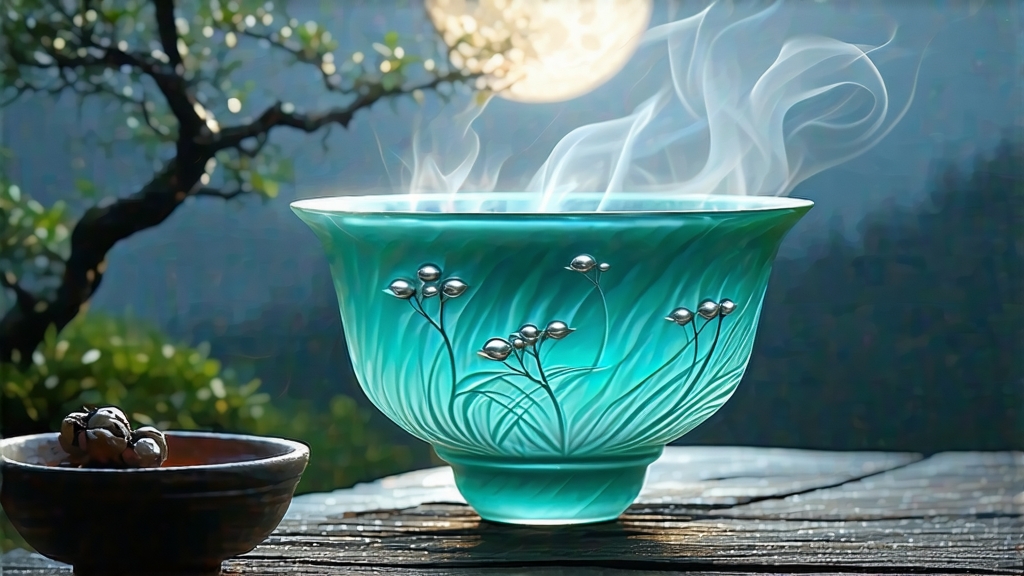
Among the six great families of Chinese tea, white tea is the least theatrical yet the most elusive. It is not rolled, not roasted, not shaken; it is simply picked and allowed to fall asleep under the sky. Within this minimalist lineage, Bai Hao Yin Zhen—literally “White-Hair Silver Needle”—sits at the apex, the purest expression of leaf, air, and time. To understand China’s most understated luxury, one must follow the moonlit trails of Fuding and Zhenghe counties in Fujian Province, where the cultivar Fuding Da Bai Hao opens its velvet buds each early spring, still guarded by night chill and mountain mist.
Historical whispers place Silver Needle’s birth during the Song dynasty (960-1279), when imperial tribute lists first recorded “white medicine tea” presented to the Huizong Emperor. The name “Silver Needle” itself appears in late-Ming local gazettes, but the tea remained a regional curiosity until 1891, when Fuding merchants steamed, packed, and shipped it down the Min River to the treaty port of Fuzhou, then onward to Hong Kong and Southeast Asia. European botanists mistook the fuzzy buds for fungal bloom; Victorian ladies steeped them in glass bowls to watch the “silver fireworks” unfurl. By 1910 Silver Needle had become the most expensive Chinese leaf on the London market, outselling even Keemun at Mincing Lane auctions. Political turmoil in the mid-twentieth century almost erased the craft, but a handful of state-run factories kept the withering courts alive, and since the 1990s small family workshops have revived the old rhythms, once again sending the moonlight northward.
Strictly speaking, only two cultivars—Fuding Da Bai Hao and Zhenghe Da Bai—may legally furnish authentic Silver Needle. The bushes flush earlier in Fuding, yielding plumper buds whose down refracts a bluish-silver; Zhenghe’s slightly later harvest gives longer, charcoal-tipped needles with a warmer, hay-like perfume. Purists debate which terroir is superior, but connoisseurs eventually concede that the same mountain fog that blurs their differences also marries them: both carry the scent of water-polished granite, orchid, and newborn wheat.
The craft looks deceptively simple: pick, wither, dry. Yet each verb hides a calendar of micro-decisions. Picking begins when the bud reaches 2.5–3 cm but before the first scale unfurls, ideally before ten o’clock on a dry morning when surface moisture has evaporated yet internal turgidity remains high. A seasoned plucker can gather barely 500 g of fresh buds per hour; five of those hours are needed to produce 100 g of finished tea. The buds are then spread on bamboo trays stacked in sun-lit courtyards where diurnal temperature swings between 15 °C and 25 °C. For the next 36–48 hours they enter a twilight zone of enzymatic conversation: polyphenol oxidase nibbles at catechins, lipids break into floral lactones, and a faint malty note emerges as proteins unwind. Every forty minutes the tea master lifts a tray to sniff; when the grassy top-note recedes and a honeyed bass lingers, the batch is moved to shaded loft racks for another twelve hours of “soft withering.” Finally the buds are sent to a charcoal-warmed cabinet kept below 40 °C, where they nap for two days until moisture drops to 5 %. No pan-fire, no kneading—just the slow persuasion of moving air—yet the transformation is profound: amino acids concentrate to 6–7 %, caffeine gently declines, and a rare arabinogalactan forms, the molecule credited with white tea’s celebrated mouthfeel.
Western tea literature often conflates white tea with “unoxidized,” but Silver Needle undergoes roughly 5–10 % enzymatic oxidation during withering, a nuance that places it between green and oolong on the oxidation spectrum. This partial oxidation is what rounds the edges, replacing green tea’s chlorophyll bite with a custard-like sweetness. Because the buds are intact, cellular rupture is minimal; the leaf keeps its living architecture, allowing years of graceful aging. A 2012 study at Zhejiang University tracked Silver Needne stored in porous paper at 25 °C and 60 % humidity; over